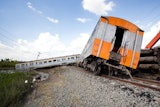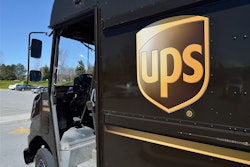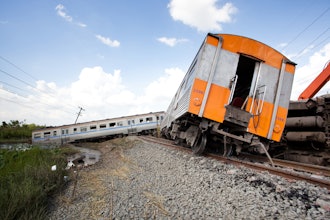
June is National Safety Month, making it the perfect time to highlight a piece of equipment that can substantially impact the safety of a jobsite — the aerial lift. Choosing the right one for your job requirements is crucial for worker safety, as well as other aspects of a worksite.
Aerial lifts are essential pieces of equipment for many different industries. Also called cherry pickers, boom lifts and bucket lifts, they enable personnel to safely work at heights, whether that’s the roof of a building or the top of a utility pool.
At their core, lifts consist of a platform supported by an extendable arm. They sometimes have other features, as well, and come in a range of variations. While they're not overly complicated machines, the aerial lift you choose can significantly impact the efficiency, productivity and safety of your jobsite.
Some lifts are designed for highly specific uses, others for certain types of job sites. It’s important to know your options and the needs you’re looking to fulfill when shopping for an aerial lift for your business. This quick guide will help you get informed so you can make the right choice.
Considerations When Choosing an Aerial Lift
How you will use your aerial lift impacts the kind of lift that’s best suited for your needs. Consider the following factors when choosing a lift:
- Weight Requirements: Consider the number of personnel and any equipment that the aerial lift will need to move.
- Required Height: Think about the height of the worksites you will use the lift to reach.
- Footprint Requirements: Footprint refers to the amount of space the lift takes up. Some jobsites may require small footprints, while others can accommodate larger ones.
- Maneuverability: Consider whether you only need the lift to move vertically or also horizontally.
- Jobsite Type: Factor in whether you’ll need to operate the lift inside or outside, inside small spaces, on rough terrain or in other environmental conditions.
- Cost: Larger, more powerful lifts, of course, cost more than less advanced models. Keep your budget in mind, but do not choose a lift that doesn't meet your needs, as this can create safety risks.

Types Of Aerial Lifts
The design of aerial lifts makes them best suited for several different types of jobs. Some of the most common kinds of lifts include:
- Scissor Lifts: Scissor lifts only move vertically but can carry more weight than other types of lifts.
- Boom Lifts: Boom lifts move vertically but also have a platform that can move beyond the base of the lift, giving you more flexibility of movement. The two types of boom lifts are straight telescopic and articulated knuckle booms. Straight telescopic boom lifts have one arm that extends straight and ideal for jobs that require a high vertical reach, while articulated knuckle boom lifts can move independently, allowing for superior maneuverability. Articulated knuckle lifts have a small footprint but a long reach.
- Atrium Lifts: Atrium lifts can fold down to enable access to small spaces and are useful for precise vertical movement.
- Personnel Lifts: Personnel lifts can hold just one worker and are ideal for small, indoor projects.
- Towable Lifts: Some lifts are designed for towing behind a work truck, making it useful for moving between jobsites.
- Rough Terrain Lifts: These lifts are similar to scissor lifts, but they’re designed to operate on outside terrain and in harsh environments.
Industries That Use Aerial Lifts
A variety of industries use aerial lifts. Potentially any sector where workers need to reach locations that are at a considerable height could find a use for lifts. Some examples include:
- Construction: To reach parts of structures when scaffolding is not an ideal option
- Contractors: To make repairs, paint and complete other work
- Manufacturing: To reach high shelves, overhead compartments and high-up machinery
- Utility: To do electrical work on utility poles and other infrastructure
- First Responders: To reach the tops of buildings or other structures
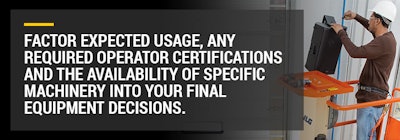
Aerial Lifts Fuel Systems
Another feature that separates the different types of lifts is the fuel they use — in fact, some do not have a power source at all. These pieces of equipment are light enough that workers can manually push them around, but still secure enough to support a worker. They’re best for indoor jobs that only require one worker.
If you need more power, height or maneuverability, though, you’ll need a powered aerial lift. Many lifts are electrically powered, while others run on battery power.
Some lifts — particularly telescopic and articulating boom lifts — run a dual fuel system of gas and propane. Others are fueled purely by diesel or gasoline. Because these power sources emit carbon monoxide, it's vital that you use them outside or in a well-ventilated area.
Renting Versus Buying An Aerial Lift
In many cases, you have the option of either renting a lift or buying one. The primary driver in this decision is how often you plan to use the lift. If you use it just a few times per year, renting is likely the better choice. If you use it frequently, you may be better off purchasing one.
It’s important to remember that if you buy a lift, you’re responsible for all maintenance and repairs. When using rented lifts, the rental company is responsible for this.
Another factor to consider is whether you have a place to store the lift. If you don’t, this could significantly increase the cost of purchasing one.
When making a cost comparison of renting and buying an aerial lift, consider all these factors. This will tell you which option is the most economical for your business.
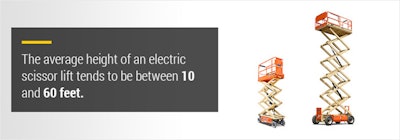
Understanding Your Options and Choosing the Right Aerial Lift Rental for Your Project
Understanding your options regarding aerial lifts is crucial as you select the right one for your business’ needs. Considering how and where you’ll use the lift will help you determine the one with the right features and price for your company.
Once you’ve found the perfect aerial lift, make sure you follow all relevant rules and regulations, take all recommended safety precautions and provide proper training for anyone who may be using it. Doing this, in combination with using the right lift, will help you lead a safe, successful jobsite.
Sean Kline is the District Sales Manager at MacAllister Rentals. A version of this article originally appeared on the MacAllister Rentals website here.
